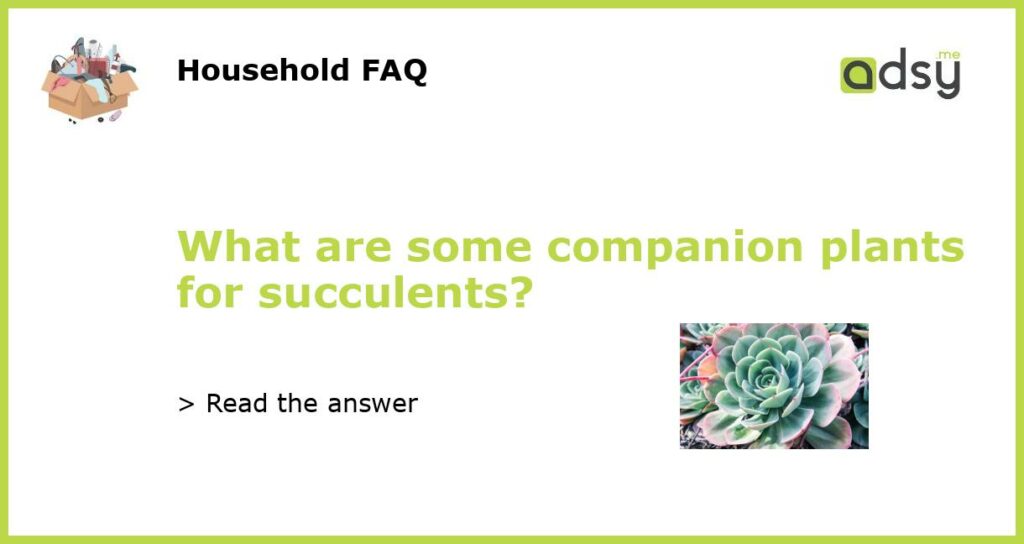5 Companion Plants for Succulents
If you have a collection of succulents and would like to add some complementary plants to enhance the beauty of your arrangement, there are several companion plants that are known to thrive alongside succulents. These plants not only provide visual interest, but they also create a balanced ecosystem that supports the health and growth of succulents. Here are five companion plants that are perfect for succulent arrangements.
Lavender
Lavender is a great companion plant for succulents because it shares similar water and care requirements. Lavender’s fragrant flowers and gray-green foliage create a stunning contrast to the vibrant hues and textures of succulents. Additionally, lavender attracts beneficial insects like bees and butterflies, which can help with pollination and overall garden health. Place lavender plants near your succulent arrangements to add height and a touch of elegance to your garden.
Echeveria
Echeverias are a popular type of succulent that make excellent companion plants for other succulents. With their rosette-shaped leaves and variety of colors, echeverias provide a beautiful backdrop or focal point to your succulent arrangements. They also have similar care requirements, making it easy to maintain a cohesive garden. Echeverias come in a range of sizes, from small rosettes to larger plants, so you can mix and match to create a visually appealing arrangement.
Sedum
Sedum is a versatile plant that can be used as a groundcover or to add height to your succulent arrangements. Its low-growing, trailing habit makes it a great choice for filling in gaps in your garden or creating a lush carpet of green around your succulents. Sedum also comes in a variety of colors and textures, allowing you to create interesting combinations with your succulents. This plant is drought-tolerant and requires minimal maintenance, making it a perfect companion for succulents.
Aeonium
Aeoniums are another type of succulent that can be used as companion plants for your succulent arrangements. These plants have large, rosette-shaped leaves that come in a range of colors, from green to dark purple. Aeoniums can add height and drama to your garden, making them ideal for creating a focal point or a striking centerpiece in your succulent arrangement. Like other succulents, aeoniums are drought-tolerant and require minimal watering, making them easy to care for.
Senecio
Senecio is a genus of succulent plants that includes a wide variety of species, many of which can be used as companion plants for succulents. Senecios come in a range of colors, from green to gray to purple, and often have interesting leaf shapes and textures. Some senecios, like Senecio mandraliscae (blue chalksticks), have trailing habits that can be used as a groundcover or to add cascading elements to your arrangement. Others, like Senecio rowleyanus (string of pearls), have unique bead-like foliage that adds visual interest to your garden. Senecios are typically low-maintenance and drought-tolerant, making them a great addition to any succulent arrangement.






